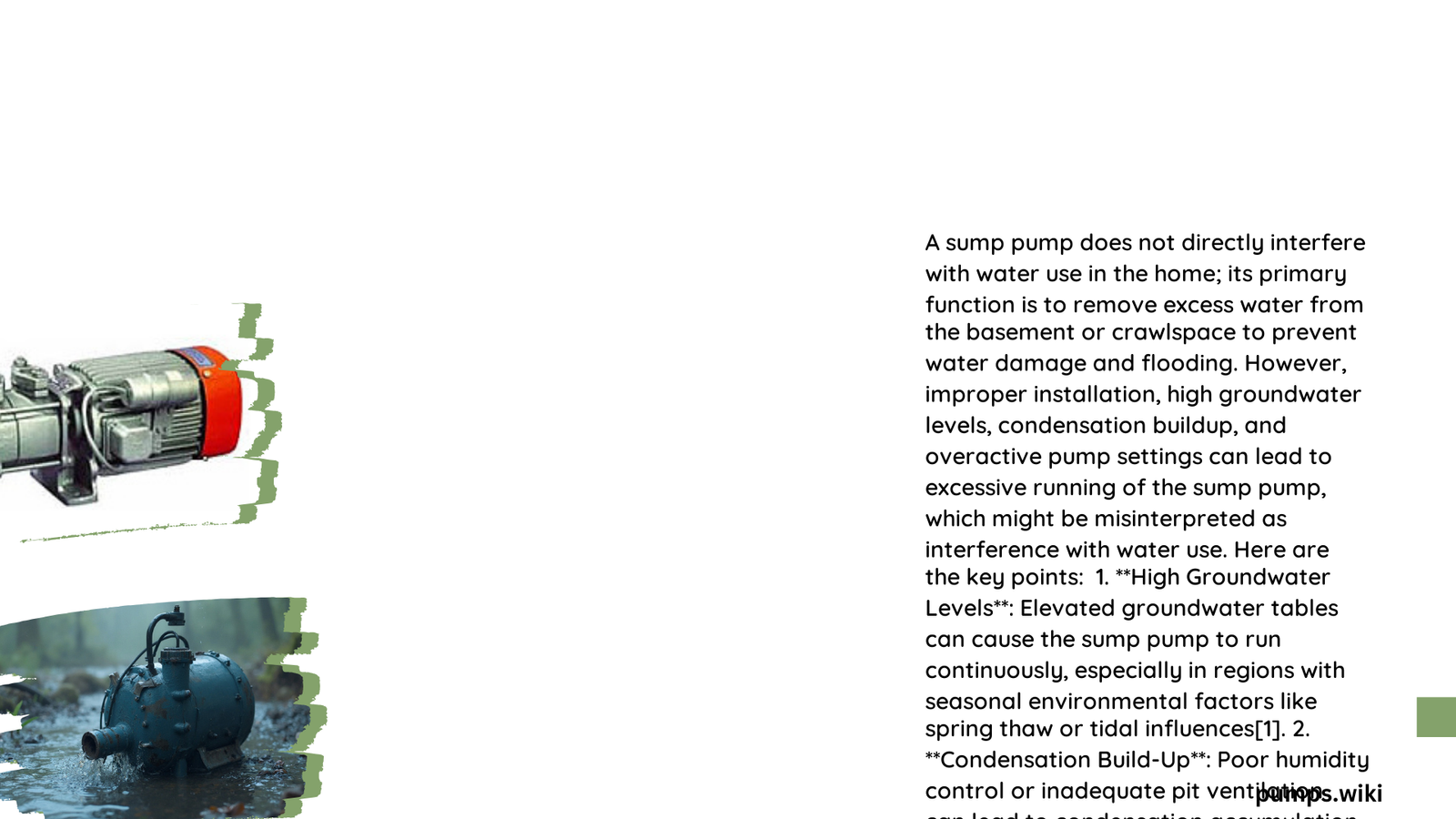Sump pumps are critical water management systems that protect homes from flooding and water damage. Homeowners often wonder about their potential impact on household water systems. This comprehensive analysis explores the intricate relationship between sump pumps and water use, examining how these devices operate, their water consumption patterns, and potential interactions with residential water infrastructure.
What Happens to Water Systems When Sump Pumps Operate?
How Do Sump Pumps Impact Water Pressure?
Sump pumps generally do not significantly interfere with residential water use. Their operation is typically independent of the main water supply system. However, certain scenarios and pump types can create subtle interactions worth understanding.
Primary Water System Interactions
| Pump Type | Water Pressure Impact | Water Consumption |
|---|---|---|
| Electrical Submersible Pump | Minimal | None |
| Water-Powered Backup Pump | Slight Fluctuation | Low Volume |
| Pedestal Pump | Negligible | None |
What Determines Sump Pump Water Interaction?
Key factors influencing water system interactions include:
- Pump Mechanism
- Electrical pumps draw power, not water
- Water-powered pumps use municipal pressure
-
Backup systems have different operational characteristics
-
Installation Configuration
- Proper plumbing connections
- Appropriate discharge mechanisms
- Professional installation standards
Can Water-Powered Pumps Affect Overall Consumption?
Water-powered backup pumps consume approximately 1 gallon of municipal water to pump 2 gallons from the sump pit. Annual water usage resembles running a lawn sprinkler for several hours.
What Are Potential Water Usage Scenarios?
Residential Water Consumption Patterns
- Normal Operation: Minimal water system interference
- High Water Table Regions: More frequent pump activations
- Seasonal Variations: Increased pump activity during rainfall/snowmelt
How Do Different Pump Capacities Impact Water Systems?
Pump capacities vary based on horsepower and drainage requirements:
- 1/3 HP Pump: Handles average residential needs
- 1/2 HP Pump: 35-40% increased capacity
- 3/4 to 1 HP Pumps: Maximum water displacement capabilities
Technical Considerations for Minimal Water Use Interference
Recommended Best Practices
- Regular maintenance
- Professional installation
- Appropriate pump selection
- Monitoring water table conditions
- Understanding local drainage requirements
Expert Recommendations
Homeowners should:
– Consult professional plumbers
– Assess local geological conditions
– Choose pumps matching specific drainage needs
– Consider water-efficient backup systems
Conclusion

Sump pumps rarely interfere substantially with residential water use. Proper selection, installation, and maintenance ensure minimal disruption to household water systems.
